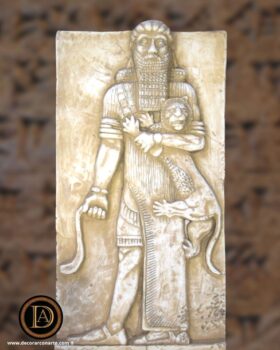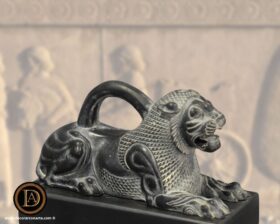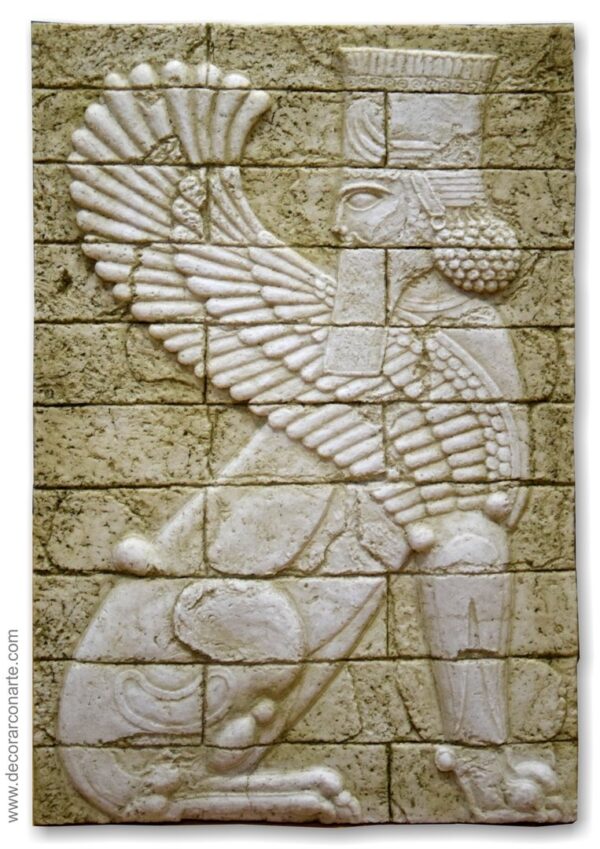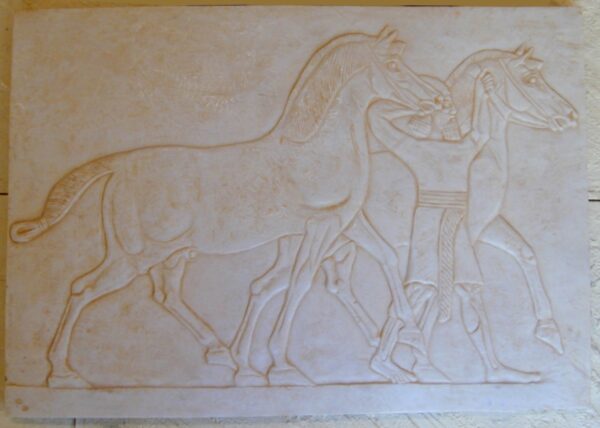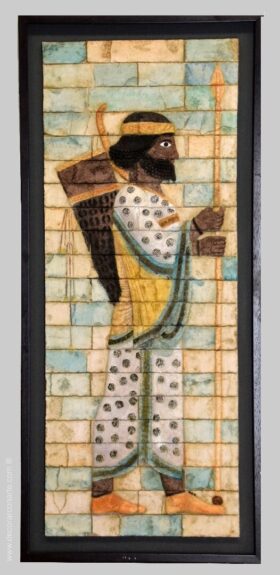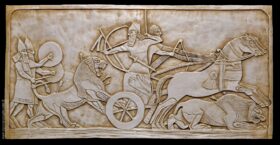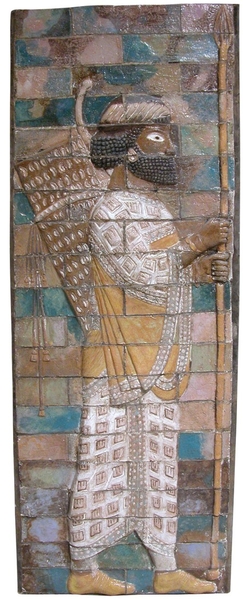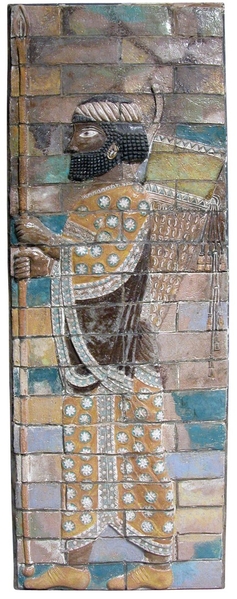MESOPOTAMIA- Archaeological and museum reproductions.
MESOPOTAMIA- Archaeological and museum reproductions.
“O man of Shuruppak, son of Ubar-Tutu, tear down the house and build a boat. Abandon wealth and seek survival. He disdains property, he saves life. And he takes on board the boat seeds of all living things”
(Tablet XI of the Epic of Gilgamesh in which the episode of the Flood is recounted).
In Mesopotamian art we find different artistic expressions that were awakened in the Neolithic period (VI B.C.) from various cultures that, sheltered by the banks of the Euphrates and Tigris rivers, developed until 539 B.C., the date of the conquest of Babylon by the Persians.
The meaning of Mesopotamia is “between rivers”, referring to the geographical location between the rivers mentioned above.
As we know, rivers have been an essential element in the development of different cultures and civilisations, and peoples such as the Akkadians, Sumerians, Assyrians and Babylonians developed around the banks of these two important rivers.
The most important elements developed by this civilisation were the cuneiform writing. Although we cannot fail to highlight the various arts, such as sculpture, painting and ceramics, of which we have marvellous examples such as the Isthar Gate.
In the development of art we can see how they made use of the natural resources they possessed, making one of them, clay, the basis of their great works, making bricks and pottery.
As in all civilisations, Mesopotamian art depicts everything from the world of the divine, populated by gods and demons, to the human world, such as the glorification of military victories and details of natural and everyday life.
As far as painting is concerned, we find that colour in their pictorial representations is scarce, with three colours dominating, basically blue, red and white. And as in Egypt, their paintings had no perspective.
The size of the representations depended on the hierarchical position of the figures depicted.
There was no dynamism in the sculptures; they were rigid and static. Their main themes are gods, kings and high officials.
As for the reliefs, these generally formed part of the decoration on the walls of the palaces. They usually told the story of the monarch’s achievements and triumphs. It was very common for him to be presented receiving his triumphs in front of his courtiers.
It was also common to depict winged bulls and sphinxes on large statues and bas-reliefs that protected the walls of their cities. These representations often consisted of fantastic animals with human heads flanking the gates as spiritual protectors.
The characteristics of Mesopotamian reliefs are very similar to those of paintings. They are mainly images in which the law of perspective is not observed, as in Egyptian reliefs.
Showing 1–28 of 30 results
-
Cylinder of Cyrus. Width: 19 cm.
174€ Add to basket -
Code of Hammurabi. 28 cm.
192€ Add to basket -
Set of three Mesopotamian reliefs
245€ Add to basket -
Hittite relief of King Katuwas. 21 x 14...
69€ Add to basket -
Bas-relief of Gilgamesh. 35 x 18 x 3...
107€ Add to basket -
Head of Hammurabi. 18 cm.
160€ Add to basket -
Hittite double-headed Sphinx. 14 cm.
91€ Add to basket -
Bulls of Persepolis (15 x 11,5 cm)
189,20€ Add to basket -
Lion-weight of Susa (Iran) 8 x 6 x...
160€ Add to basket -
Mesopotamian androcephalus bull. 14 x 7 cm.
160€ Add to basket -
Weight of Susa. H 5 x 8 cm.
123€ Add to basket -
Mesopotamian Sphinx relief- right. 49x33cm.
372€ Add to basket -
Mesopotamian Sphinx relief- left. 49x33cm.
372€ Add to basket -
Assyrian relief with two horses (Musée du Louvre)....
158€ Add to basket -
Relief of wounded Lioness. 87 x 47 cm.
423€ Add to basket -
Babylonian lion. 40 x 24 cm.
73€ Add to basket -
Hittite relief of dancing genies. 18 x 15...
66€ Add to basket -
Sumerian medical prescriptions. The oldest pharmacopoeia. 18 cm.
110€ Add to basket -
Relief of a Mesopotamian priest. 27 x 6...
84€ Add to basket -
Persian Archer Bas-relief (left). 121x54cm.
1.549€ Add to basket -
Persian Archer Bas-relief (right). 121x54cm.
1.549€ Add to basket -
Bas-relief of Winged Lion. 117 x 77 x...
1.877€ Add to basket -
Relief Persian Archer- Right. 111 x 44 cm.
855€ Add to basket -
Relief Persian Archer- Left. 111 x 44 cm.
855€ Add to basket -
Ashurbanipal and the lion. Assyrian bas-relief. 85 x...
864€ Add to basket -
Bas-relief of Babylonian lion. 150 x 80 cm.
1.549€ Add to basket -
Persian archer relief-right. Mural of ceramic. 162 x...
7.933€ Add to basket -
Persian archer relief-Left. Mural of ceramic. 162 x...
7.933€ Add to basket









